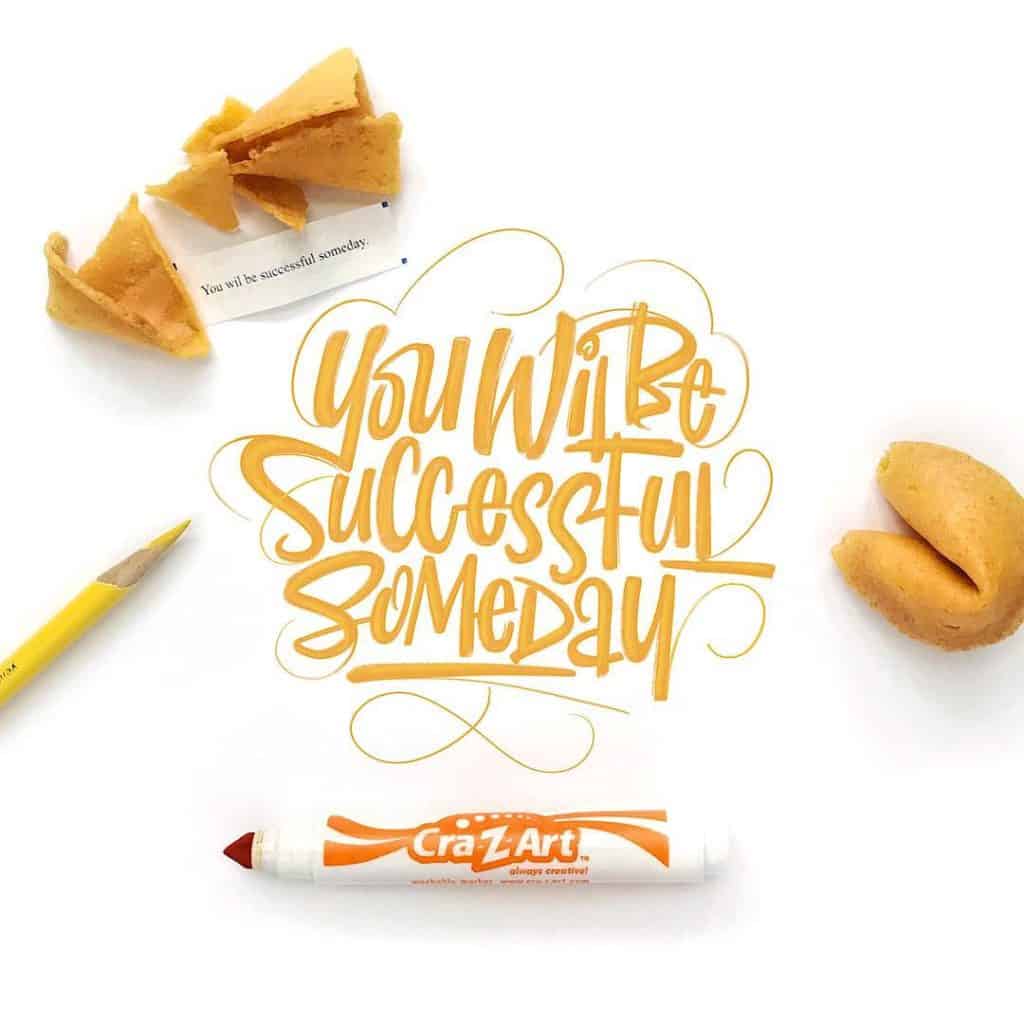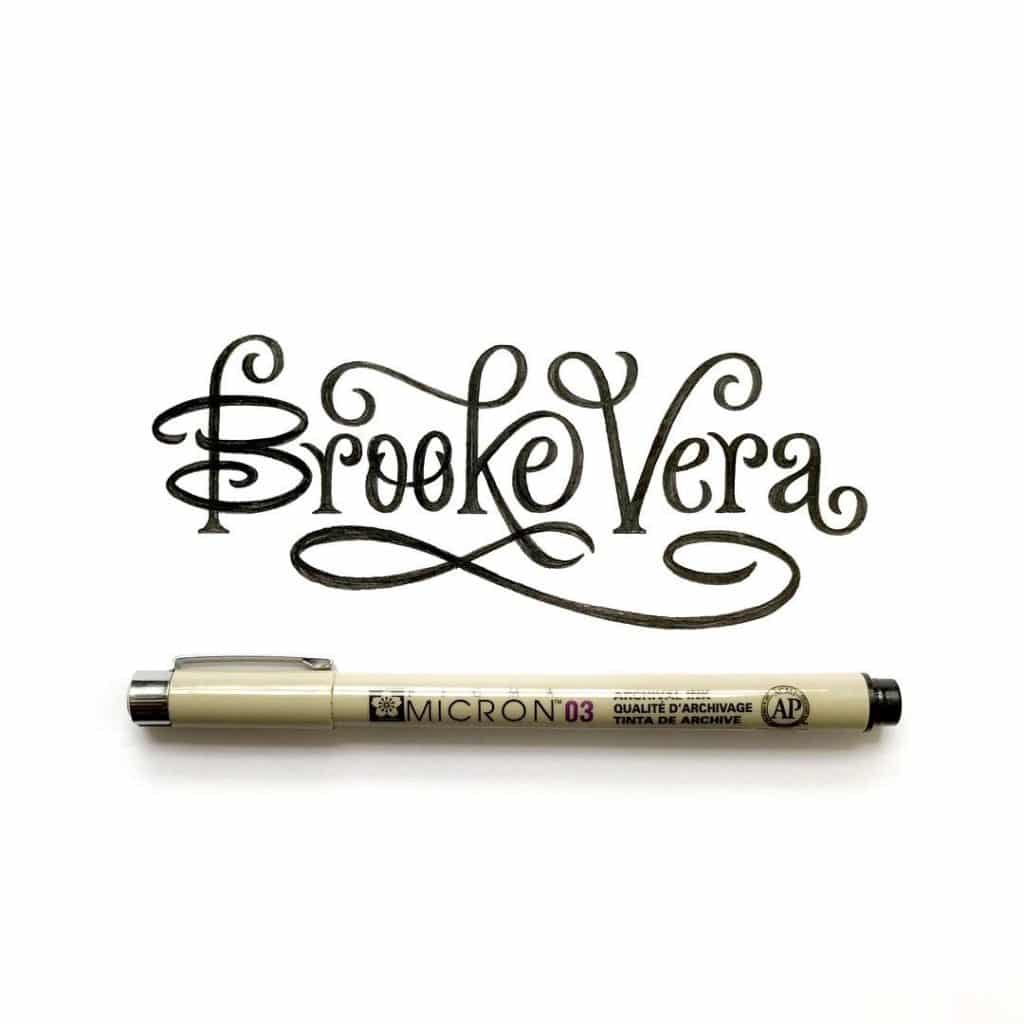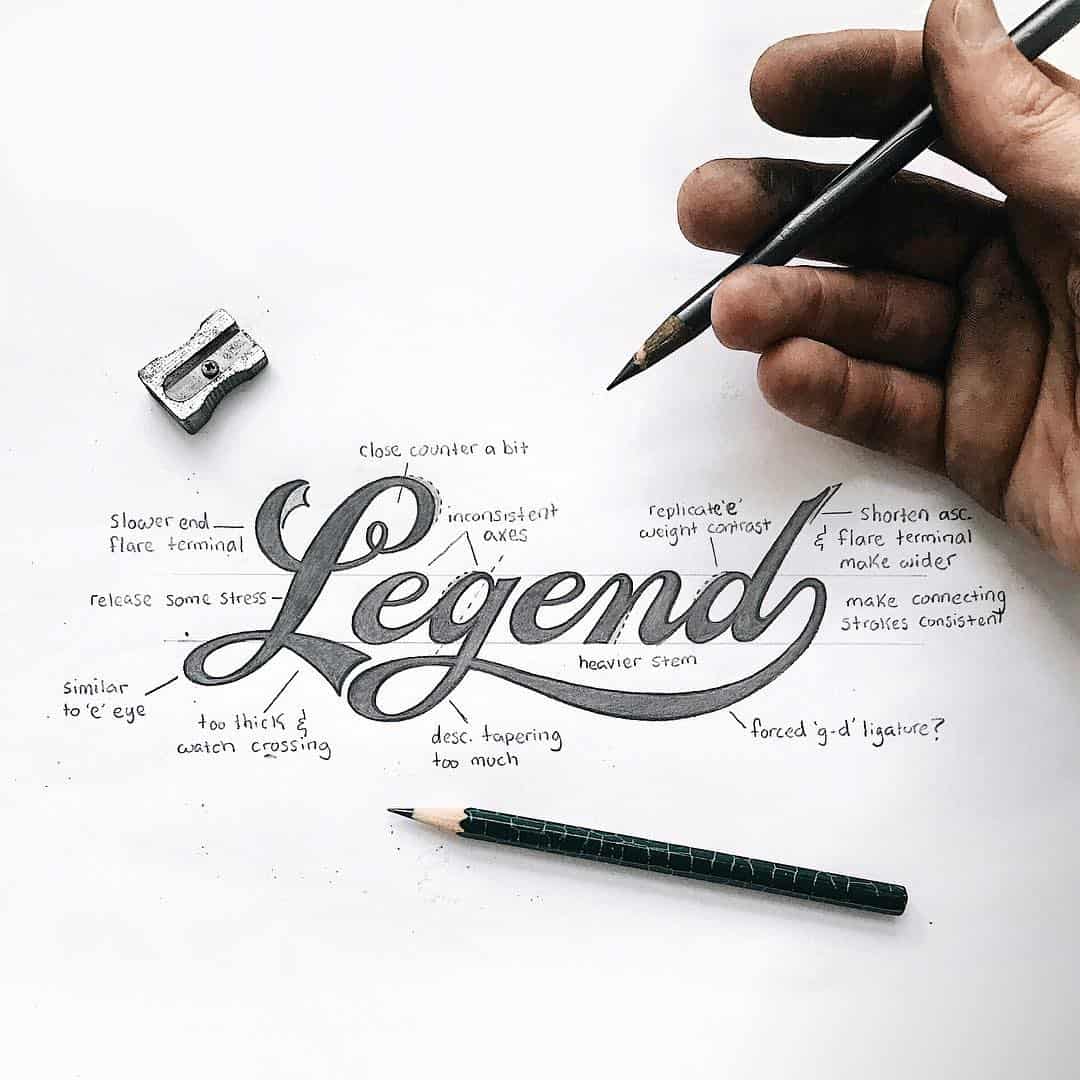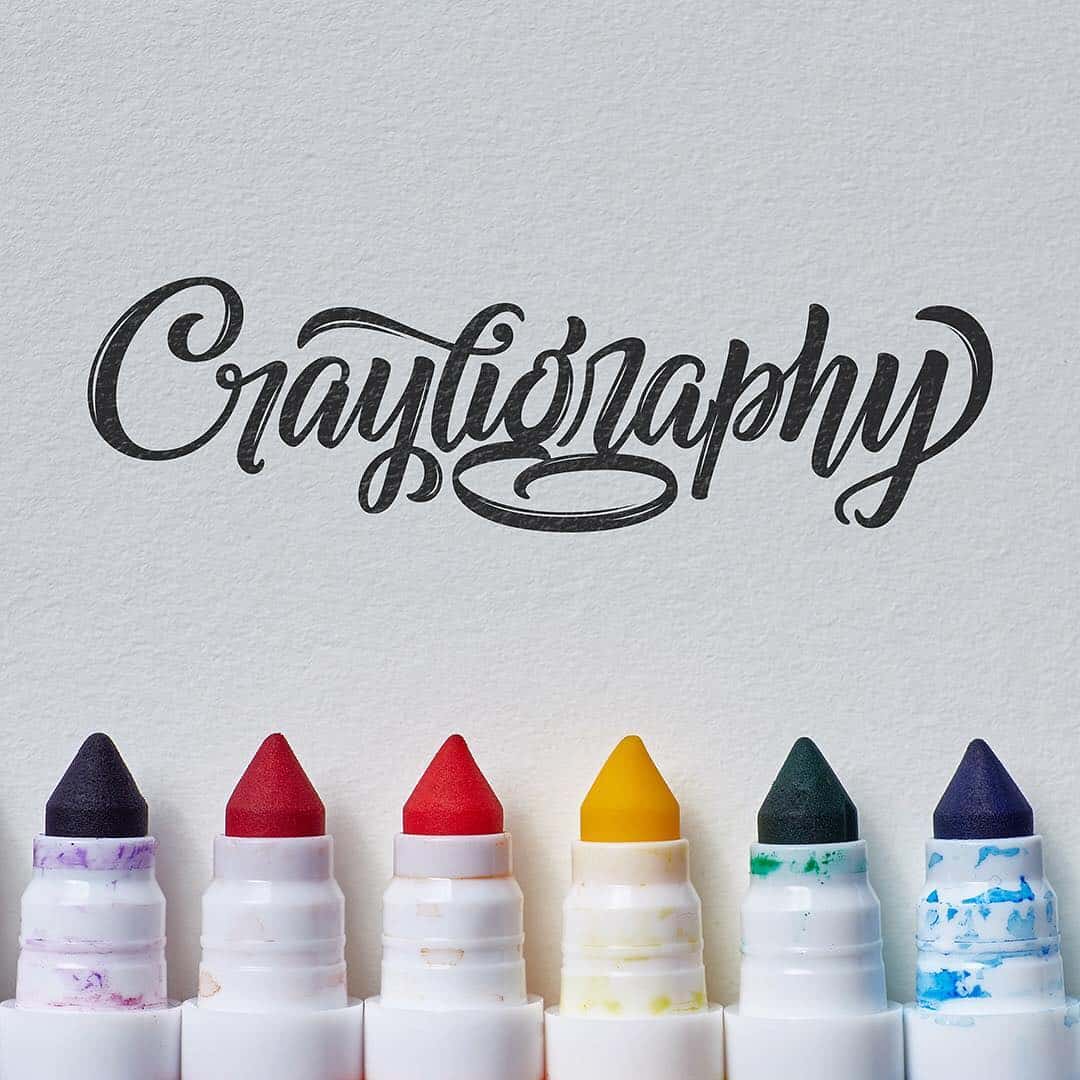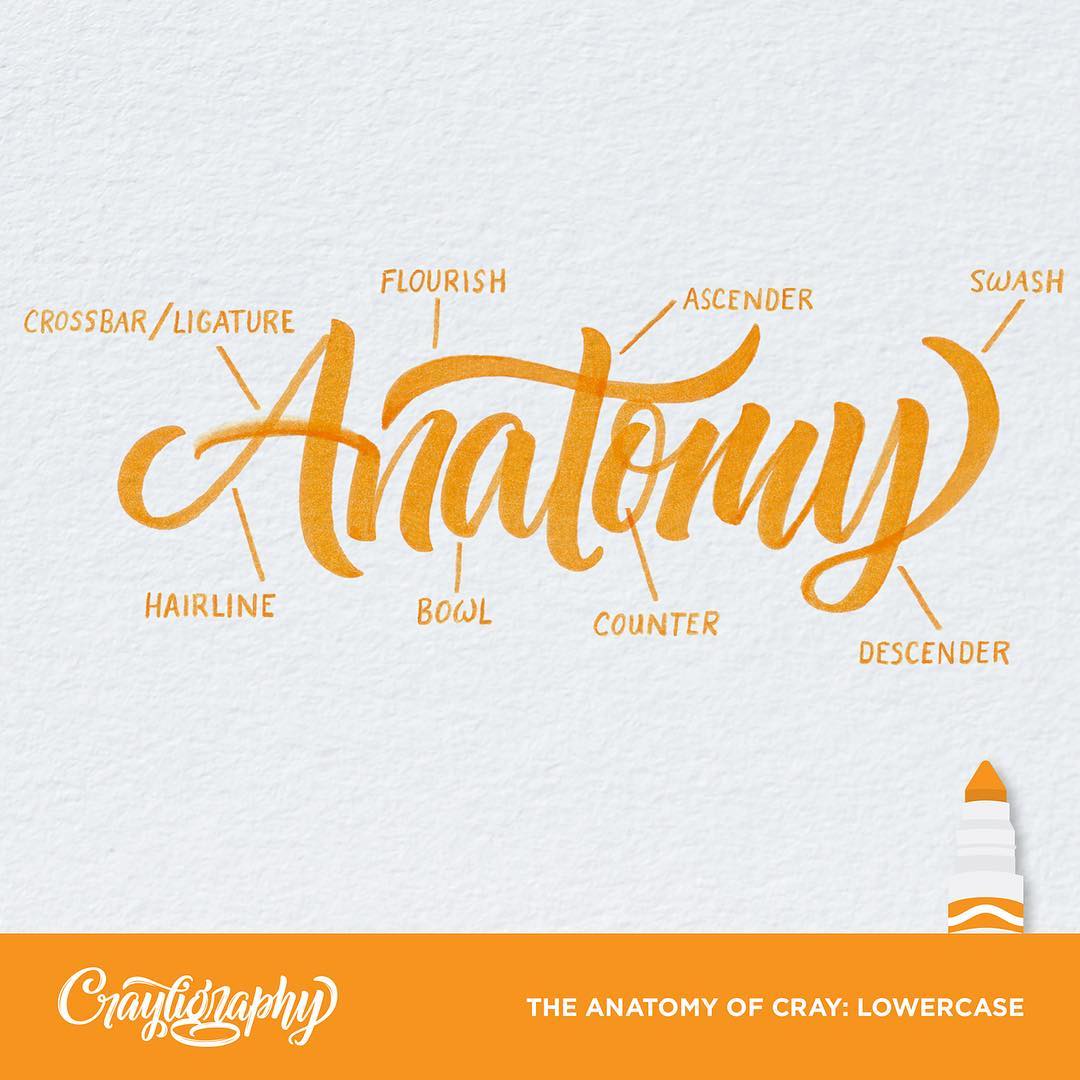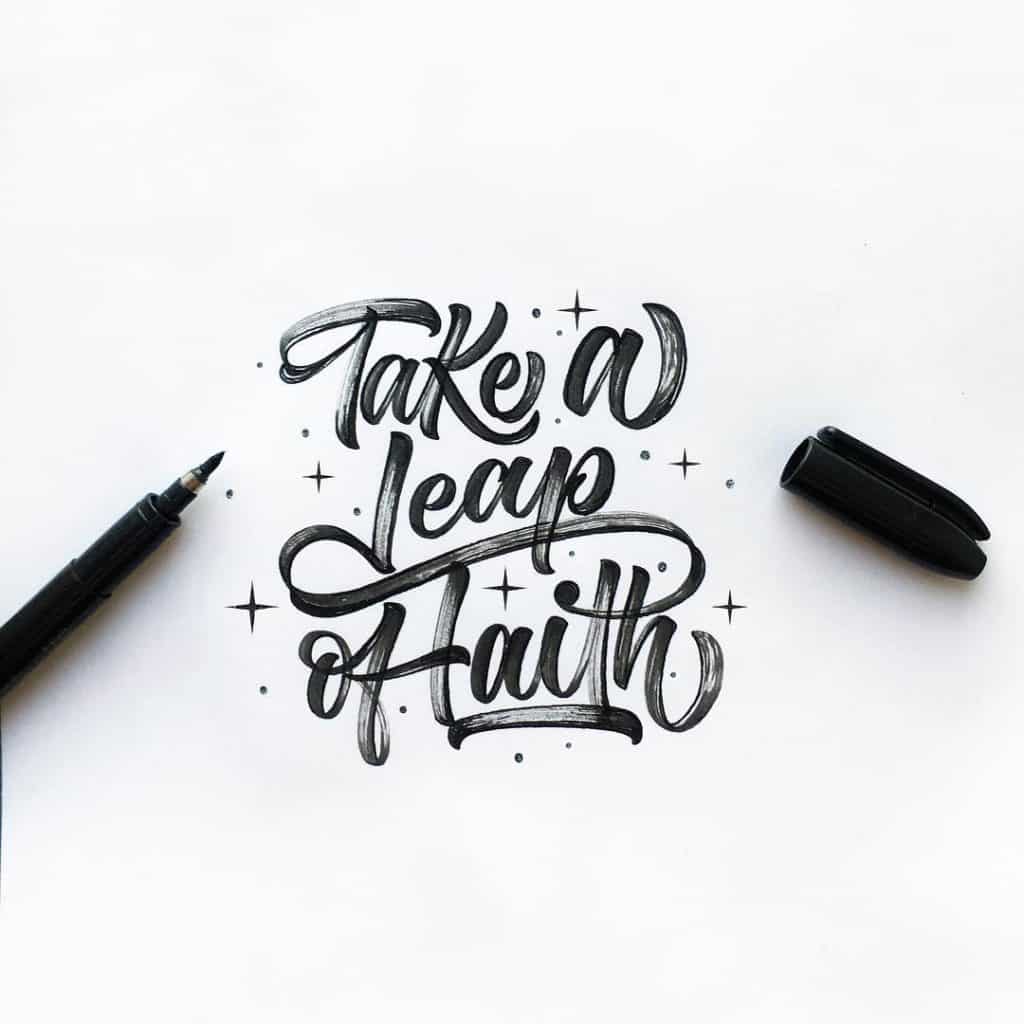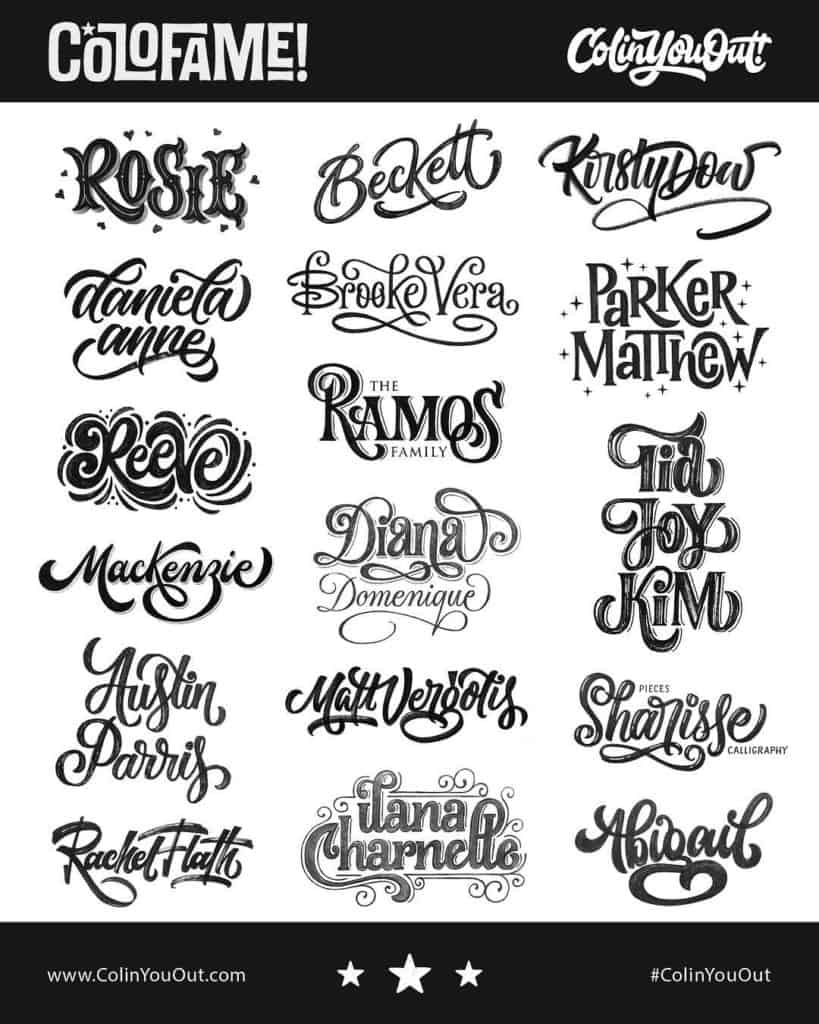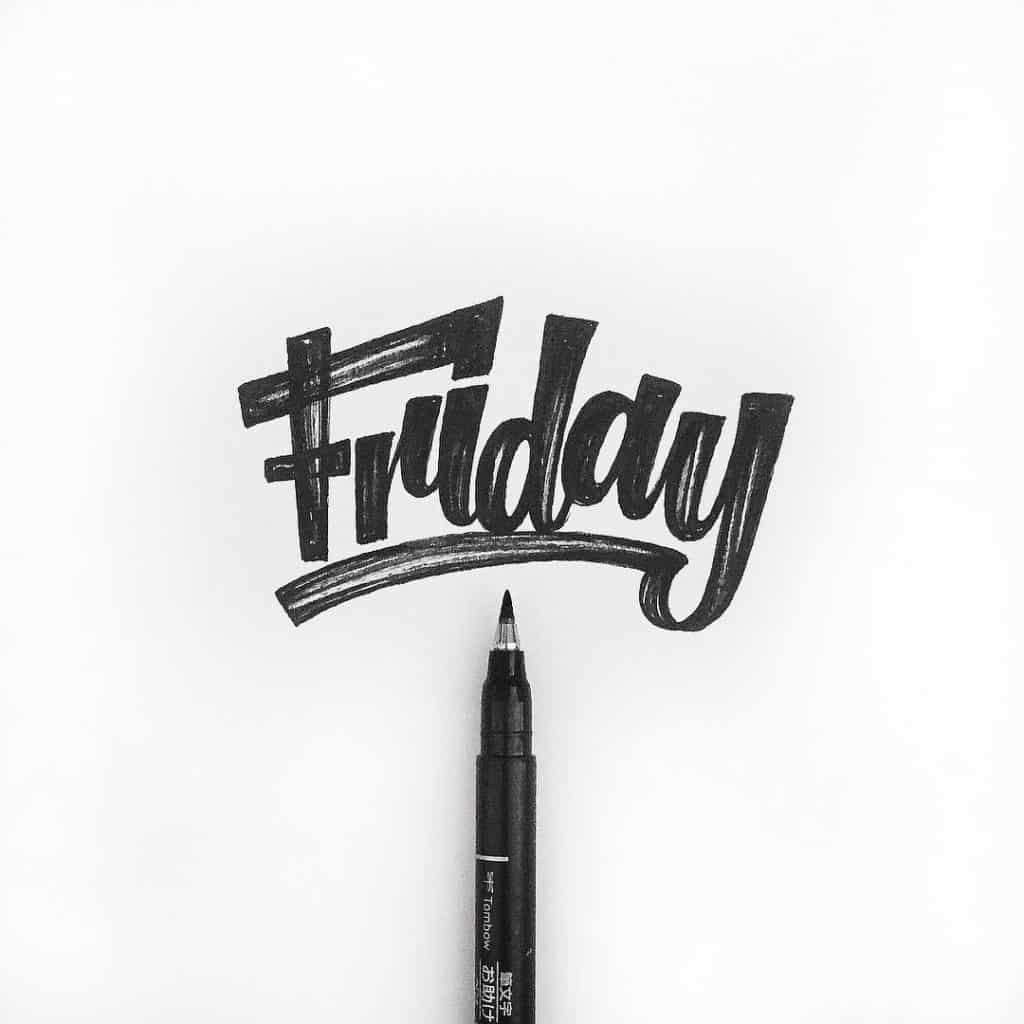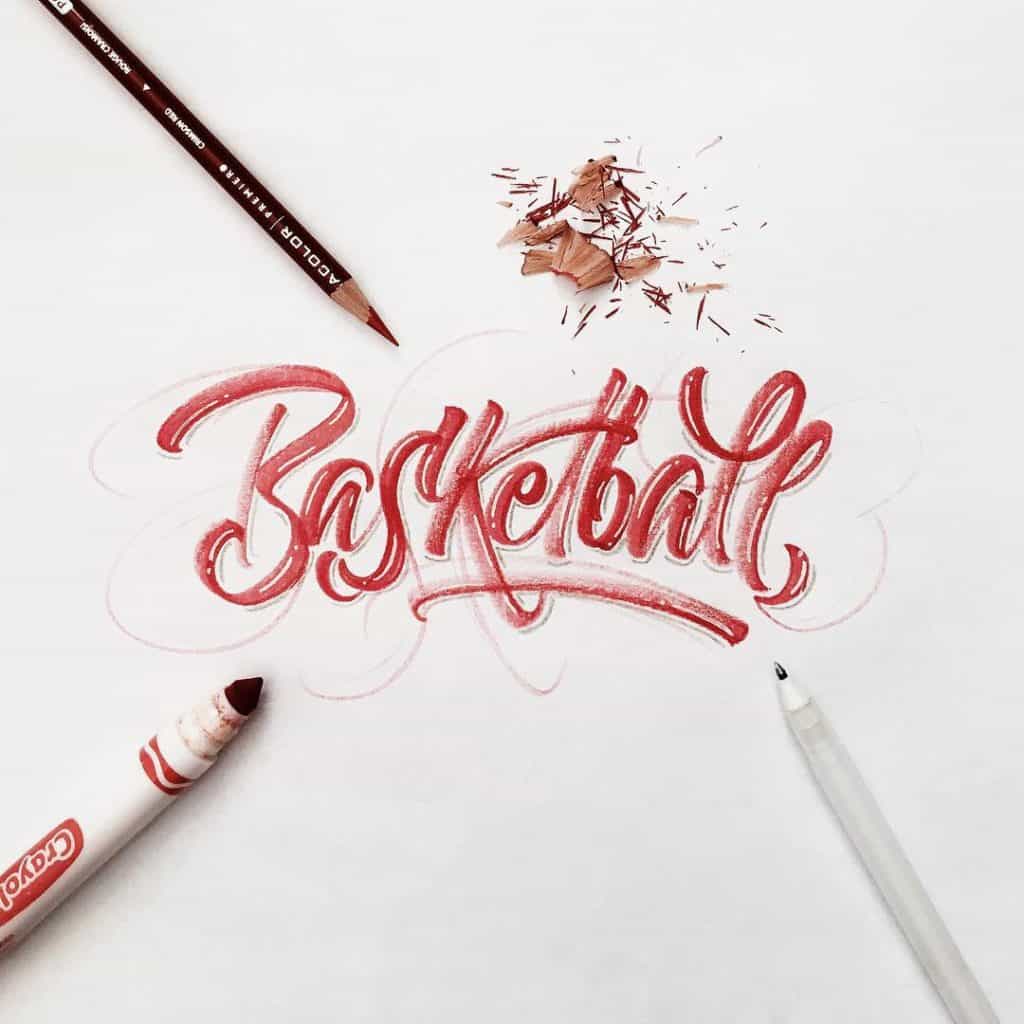This post and the photos within it may contain affiliate links. If you purchase something through the link, I may receive a commission at no extra charge to you.
We are finally back with our hand lettering interview series after quite some time!
Lately we have been heavily focused on creating the educational content – tutorials, reviews, tips, and it’s quite challenging to keep up with everything (feel free to share some organizational tips! :D)
Today we are happy to share with you our latest interview with a truly exceptional and hard working artist – Colin Tierney.
Without any further delays and spoilers – enjoy the interview!
1. Give us a quick intro—who is Colin Tierney?
I own and operate Tierney Studio—an independent design company in historical Shepherdstown, West Virginia—specializing in lettering, calligraphy, illustration and branding. I am also the founder of Crayligraphy which is an educational platform to help people learn the ins and outs of letterforms through the art of writing and drawing.
2. How and when did you start drawing letters?
I began my venture in hand lettering around 2010. At the time, I was primarily a visual branding artist, designing logos and identity systems for corporations and smaller mom and pop businesses. I came across several lettering artist’s works while browsing online and was enamored with their level of skill. At some point, I decided I was going to learn lettering in hopes to add another service to my ever-evolving design career. I remember reading several books and studying the works of others. In Adobe Illustrator, I would arrange text using some of my favorite typefaces and then turn them into outlines. In doing so, I was able to understand the anatomy that made up the type I loved. I began to alter the typographic portion of logos to better correlate with their corresponding symbol and overall design. The deconstruction process leads me to begin drawing fully custom letters. I started off like everyone else: absolutely terrible. But, I didn’t let this hinder my love for lettering. After continual practice and guidance from seasoned lettering pros, I was able to enjoy the process and see some significant improvements.
3. You are the founder of the Crayligraphy online community, can you tell us a bit about that?
Crayligraphy began as a passion project of mine to help people learn the art of calligraphy and hand lettering in a cheap, easy & fun way. If someone were interested in learning calligraphy—unsure if they would even enjoy it and under the impression they’d need to spend a lot of money on traditional media— Crayligraphy offered a different approach; learning to write beautifully with a marker. Since writing with a marker is unconventional, ‘Crayligraphy,’ or crazy calligraphy, seemed like the perfect neologism. Not only is calligraphy with a marker cheaper, but the learning curve is far easier compared to traditional brush and dip pens. The less flex in a brush, the more resistance there is between the tip and the paper which allows for better control. Broadline markers have a firm, conical nib that can create thick downstrokes and hairline upstrokes. By tilting the barrel of a marker and using fingertip pressure techniques, one can emulate almost any style of script.
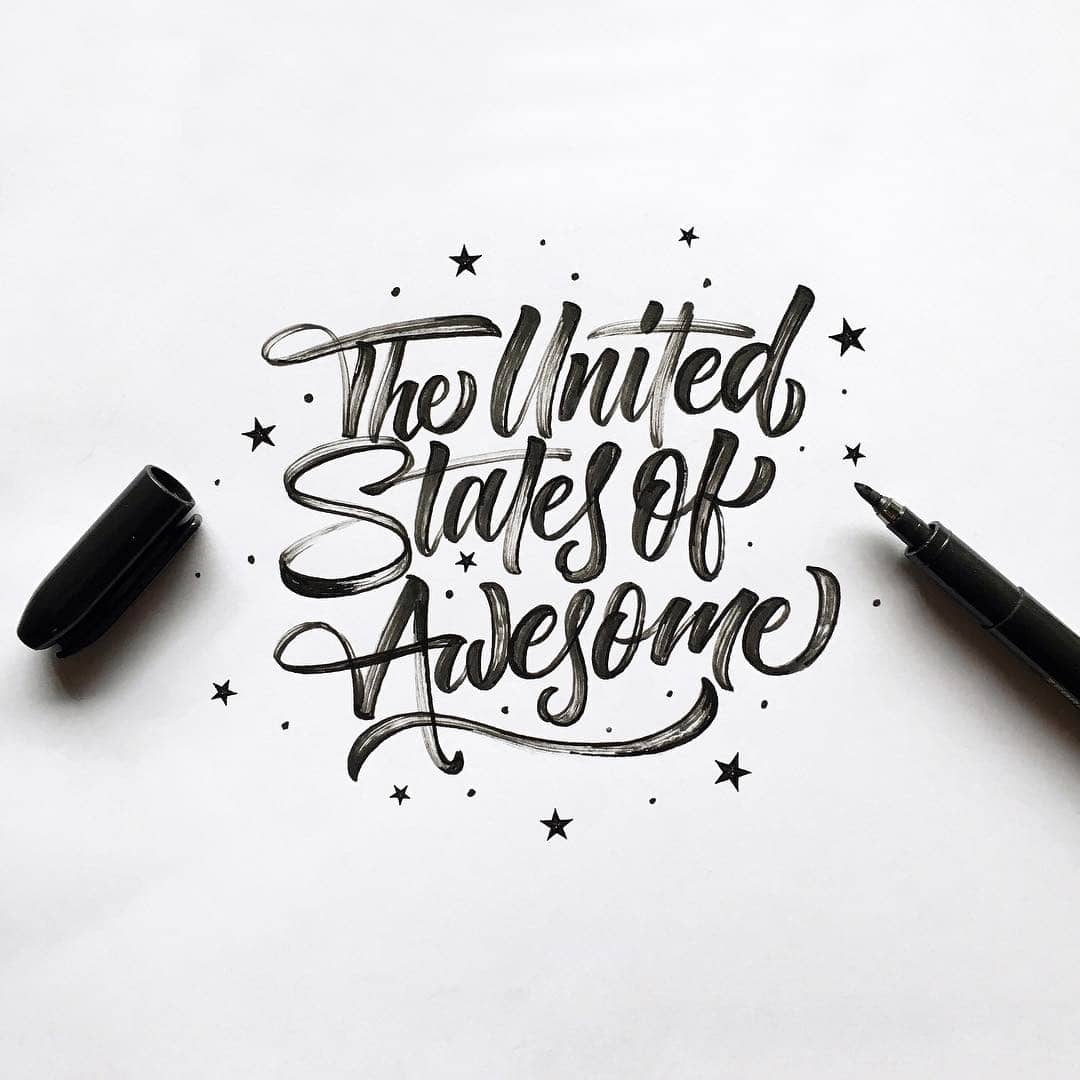
4. How can someone get involved with Crayligraphy?
It’s as simple as raiding your children’s art supplies, picking up a marker, and reading the tutorials I provide on the site. Don’t have children? Just go to your local supermarket and purchase any broad-line marker brand. Through our newsletter (The Craymunity), I provide weekly challenges called #Saturcray, updates on upcoming workshops, and inspirational stories. As an added bonus to signing up, subscribers are able to access and download a Crayligraphy guide to reference while practicing. I encourage anyone interested in learning Crayligraphy, to practice 20 minutes a day. That’s it!
5. I’m pretty sure that the Crayola marker is one of your favorite lettering tools, but could you name a few more (and why)?
While Crayola might be the first brand that comes to mind when thinking of broadlined markers, there are several other options that are not only cheaper, but in my opinion, better. To name a few; Roseart, Cra-Z-Art and Target’s Up&Up brand, provide great alternatives if the other “bigger” brands aren’t available. As for non-marker lettering/calligraphy tools, my go-to brush pen of choice would have to be any of the Zebra Fude Sign Brush Pens (specifically the medium tip) or the Fudenosuke Brush Pen. These brush pens in particular are great for beginners because of their firmer tips. Their brushes maintain a subtle flex, but just enough to eliminate the difficulty most experience with softer brushes. I especially enjoy them because over time, they begin to dry out and create some really cool textures that I’m able to apply to the lettering/refinement process.
6. You have managed to build quite an online audience in the last years for both your personal profile and Crayligraphy. Could you share a few fundamental tips, some core rules? Also, what is in your opinion the biggest benefit of building an audience?
I receive a lot of questions from people wanting to know more about how I implement my lettering and calligraphy. Before the inception of Crayligraphy, I replied to as many people as I could, but eventually this took up too much of my time. I was flattered with the interest in my work, but also overwhelmed with the amount of time it took up to respond. So, I had to solve a problem (if calling interest in my work a problem). How could I turn this passion of mine into a shared network of information? The answer was right in front me. By identifying the issues; I couldn’t realistically respond to everyone, understanding the interest; learning calligraphy, and realizing a solution; build an educational platform for people to reference, I could direct people to Crayligraphy. The solution bridged the correspondence gap more efficiently. Crayligraphy created a foundation for me to build an audience. The benefit of building an audience is earning their trust and assembling a community. The numbers didn’t matter to me, though they were’t difficult to garner. The solution was just as easy for my audience as it was for me to figure out. What mattered and still does to this day, is knowing I am able to help people learn what I am most passionate about.
7. What are some of your favorite educational resources on lettering and calligraphy? (online courses, books, blog posts etc.) Books!
I totally get the desire to hop online and browse forums, courses, blog posts and the time-sucking platforms of social media. I still do this from time to time. It’s right there at our fingertips and with a click of a few buttons, we have so much information at our disposal. This accessibility, however easily attainable it is—can also be a deterrent for the simple fact of information overload and becoming a little too inspired. I find sitting back and opening a book—a tangible resource—creates a better learning experience that is retained more efficiently. Some books that have helped kickstart my knowledge of letterforms are the following:
- Logo, Font & Lettering Bible
- Mastering Copperplate Calligraphy: A Step-by-Step Manual
- Brush Lettering: An Instructional Manual Of Western Brush Lettering
- Lettering & Type: Creating Letters and Designing Typefaces
- Logotypes & Letterforms: Handlettered Logotypes and Typographic Considerations
- Fonts & Logos: Font Analysis, Logotype Design, Typography, Type Comparison
- Dangerous Curves: Mastering Logotype Design
It’s important to note that I often go to thrift stores and search (for hours) in the library section for anything design, type, lettering or calligraphy related. I find some of my most prized possessions are antique books written decades, even a century ago.
8. Could you name a few artists that you really admire and that is a constant source of inspiration for you and your artwork?
If we’re talking specifically lettering/calligraphy artists, I can name a few who have either helped me throughout my career or continue to inspire me. In no particular order:
- Claire Coullon—my mentor and reason for where I am today when it comes to lettering.
- Matt Vergotis—a lefty calligrapher and lettering artist who makes writing look effortless.
- Natalie Downey—an up-and-coming calligraphy who I like to call a ninja wizard. Natalie’s fragmented approach in calligraphy is something amazing to witness.
- Sergey Shapiro—one of the first lettering artists who inspired me to take the leap into the lettering game.
- Simon Walker—a pure artisan when it comes to vintage letterforms. Simon’s work is extremely easy on the eyes.
9. Do you remember your first (ever) commissioned lettering project?
I sure do. The job was to help rebrand a health and wellness blog that was receiving a lot of attention back when blogs ruled the internet. The company is called ‘Wellness Mama,’ and I designed my first fully custom logotype for them. They wanted a more fun and welcoming logo than what they were using at the time so I after countless iterations, we settled on a bouncy, swash driven script. They have since altered the logotype, but you can see the original refresh here.
10. Your favorite lettering technique, your least favorite, and one that you would like to learn/improve?
I’m bias, but my favorite lettering technique is Crayligraphy. I break out the markers each time I’m laying out a commissioned piece, sketching logotypes for a client or simply getting some practice in. I’m not sure what my least favorite technique is, but I can say I love 3D lettering and would love to add this to my list. Also, my buddy Austin Saylor is a pro at moving letters, and at some point I’d like to carve out time and take his Lettering Animation course.
11. Where do you see Tierney studio and Crayligraphy 5 years from now?
Five years from now, I want to build Tierney Studio into a small team of enthusiastic artists. I’d like to be able to offer more services (photography, videography, other branches of design) so that we’re able to realize and provide a greater scope of any given project. I envision Crayligraphy being one of the top educational resources for anyone interested in learning calligraphy. Through in-person workshops at almost anyone’s disposal, online courses, and plenty of material to reference, the novice in calligraphy will be well equipped. I would also like to release a book and if I’m shooting for the stars—our very own brand of Crayligraphy markers!
BE SURE TO CHECK OUT COLIN’S OTHER ONLINE PLATFORMS!
About the author
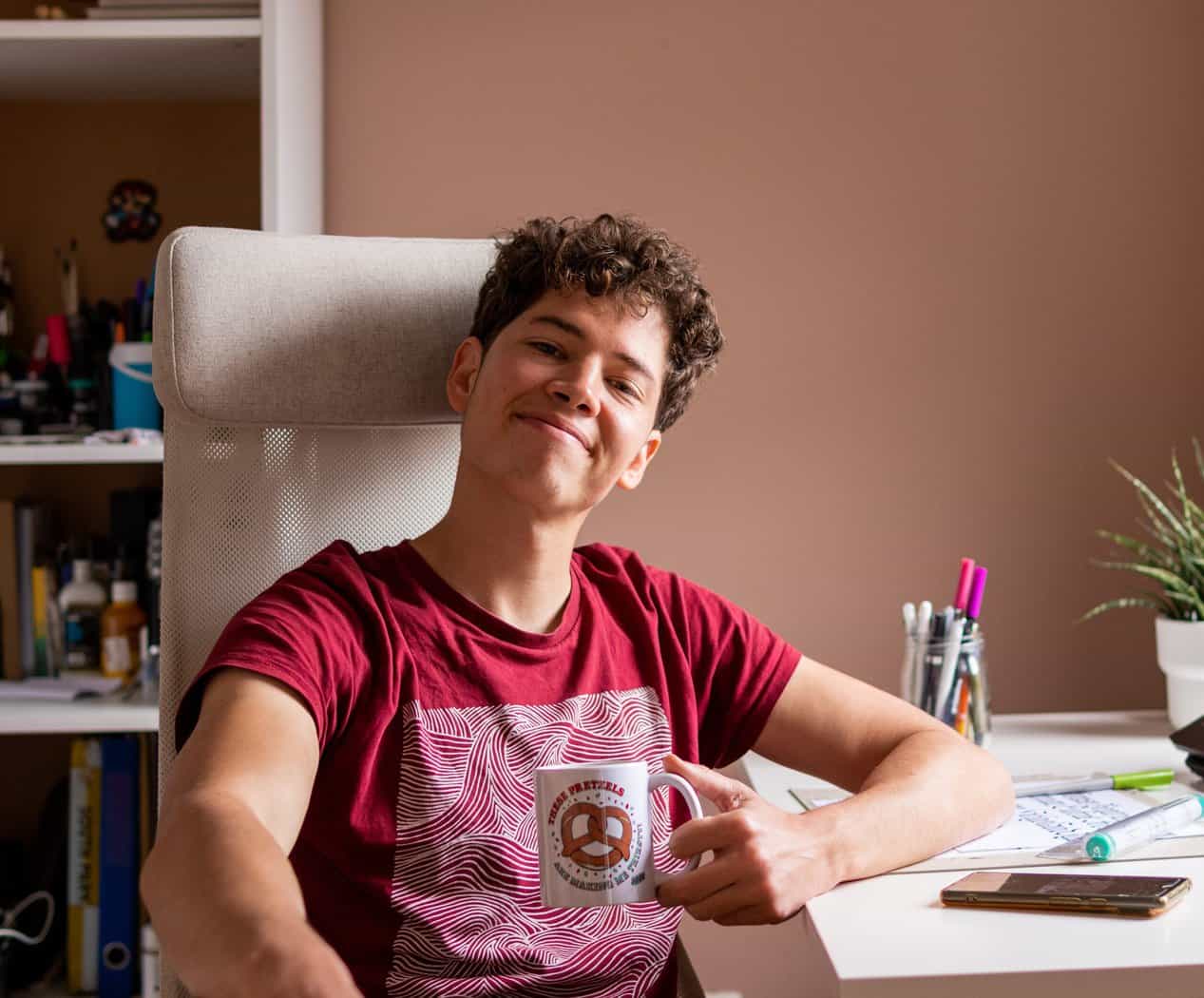
Hey, I’m Max Juric, and I’m deeply passionate about calligraphy and hand lettering.
I’ve spent years honing my skills in the art of lettering, working with hundreds of clients from all over the world on design projects such as logotypes, branding, custom lettering, murals, and more.
But my journey doesn’t end there. I’ve also dedicated myself to sharing my knowledge and expertise with others, creating a wealth of resources including tutorials, articles, and podcasts.
It’s been incredibly rewarding to see thousands of people engaging with my content each month. Knowing that I’m helping fellow enthusiasts grow and develop their skills makes me really happy.
Welcome to Lettering Daily, your hub for all things lettering and calligraphy. Whether you’re a seasoned pro or just starting out, I’m here to inspire and guide you on your lettering journey. Stick around, and let’s explore the world of letters together!

